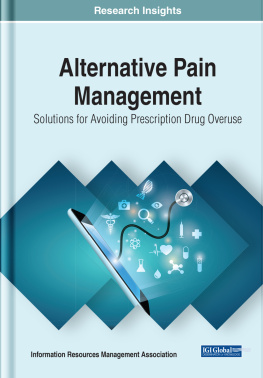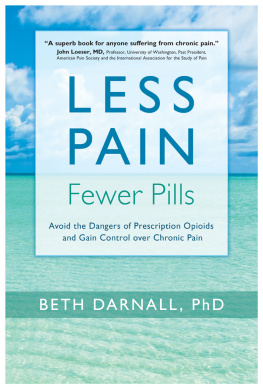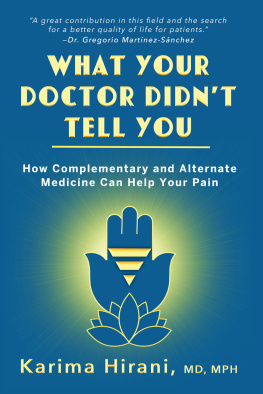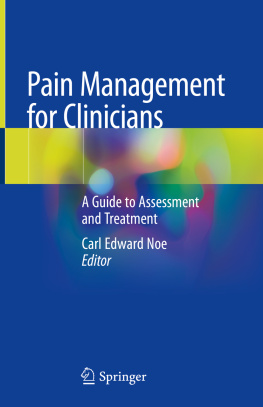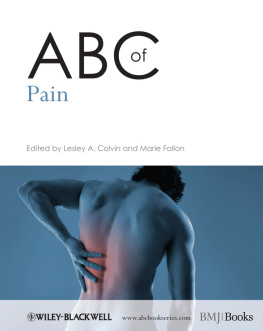Chapter 1
Chronic Stress and Chronic Pain:
Disability After Trauma and Global Trends
- Branislav Starcevic
Clinic for Orthopaedic Surgery and Traumatology, Clinical Center of Serbia, Serbia
ABSTRACT
Pain and stress basically overlap in conceptual and physiological perceptions. Chronic stress and chronic pain share a common behavioral model of failure to extinguish negative memories as one of psychological and physiological mechanisms of defense. They also have discrepancies such that the final brain endophenotype of posttraumatic stress disorder (PTSD), depression, and chronic pain appears to be different among the three conditions, and the role of the hypothalamic-pituitary-adrenal axis remains unclear in the physiology of pain. Persistence of either stress or pain is maladaptive and could lead to compromised homeostasis. The effectiveness of interventions that may increase return to work and patient satisfaction in trauma victims should be a future directive of research.
INTRODUCTION
The concept of pain has remained a topic of long debate since its emergence in ancient times. It is considered that the initial ideas about pain as a new entity were defined before 1800. Since then, different theories of pain have emerged and become central topics of debate. The existing theories of pain may be appropriate for the interpretation of some aspects of pain, but the history of pain problems is as long as that of human beings and the understanding of pain mechanisms is still far from very well defined and requires extensive research.
Modern theories sought a consensus definition for pain, and in 1975, the International Association for the Study of Pain defined the pain as an unpleasant sensory and emotional experience associated with actual or potential tissue damage, or described in terms of such damage.(IASP,2011)
As a physical phenomenon, the emotional state of a person, as well as the context or situation associated with the pain also impacts the perception of the nociceptive or noxious event. For example, if a human experiences a painful event associated with any form of trauma a reoccurrence of similar physical pain will not only inflict physical trauma but also the emotional and mental trauma first associated with the painful event. That was a basic hypothesis primarily for defining the concept of posttraumatic stress disorder (PTSD). Research has shown that should a similar injury occur to two people, one person who associates large emotional consequence to the pain and the other person who does not, the person who associates a large consequence on the pain event will feel a more intense physical pain that the person who does not associate a large emotional consequence with the pain.
Acute pain with its unpleasant features plays an important role in protecting the body from potential injury and represents the characteristic evolutionarily created with the aim of survival. Painful sensation promotes a change in actions and behavior which could stop any further injury. On the other hand, chronic pain represents a pathologic condition which neither serves the defense of the organism nor is it harmless. By the International Association for the Study of Pain (IASP), the pain is considered to be chronic when it lasts or recurs for more than 3 to 6 months(Chadi,2017)
It is estimated that chronic pain affects about 20% of people worldwide3-6 and its treatment is considered to be a significant unmet therapeutic need.
The link between stress and chronic pain is a well known but this interaction still demands further investigation. It is possible that there are common central mechanisms that facilitate both stress and nociception. Investigation of this relationship that exist between stress and nociception could possibly lead us to the atypical approach in pain treatment (Ponsford,2008).
In this text the author aimed to give the overview of pain pathways and pain matrix, discuss the potential mechanisms that underlies transformation of pain from acute to chronic form and to point out the key site of action of the currently available medications. Special attention will be devoted to the reports of so far conducted investigations supporting and explaining potential synergistic mechanisms of stress and chronic pain, pointing out the direction for further investigations in search of more effective drugs or treatments for chronic pain.
Pain is a multidimensional sensation comprising sensory information, affective processing and a cognitive-evaluative component. Furthermore, pain leads to changes in autonomic body functions such as blood pressure, heart frequency. Pain perception can be substantially altered in different psychiatric disorders.
Experimental studies have described different mechanisms for altered pain perception and processing in several psychiatric disorders. Pain and stress basically overlap in conceptual and physiological perceptions. Chronic stress and chronic pain share a common behavioral model of failure to extinguish negative memories as one of psychological and physiological mechanisms of defense. They also have discrepancies such that the final brain endophenotype of posttraumatic stress disorder (PTSD), depression, and chronic pain appears to be different among the three conditions, and the role of the hypothalamic-pituitary-adrenal axis remains unclear in the physiology of pain. Persistence of either stress or pain is maladaptive and could lead to compromised homeostasis.(Chadi, 2017)
Neuroanatomical morphological supstrate assumed to be involved in pain processing and perception id dorsolateral prefrontal cortex(DLPFC). As previously mentioned, depression presents the final endophenotype of posttraumatic stress disorder. Depression is suppose to be overlapping in a majority of times when it is difficult to distinguish between PTSD and depression differentially in final diagnostic. Patients psychological characteristics induce the prevalence of PTSD morbidity as well as coping mechanisms. Neurophysiologically, in depression, reduced activity of the dorsolateral prefrontal cortex is found to be involved in psychomotoric slowdown and attention and memory deficit. Also a positive correlation is found to exist with the severity of trauma and pain perception.
The explanation of the reduced pain perception in depression lies in cognitive deficit of pain processing stimuli, and manages the visualisation of the hyperstimulation of this brain area.
Amygdala presents grey matter which activity is increased in depression, but decreased activity is shown in healthy patients when experiencing pain.
Stress is often described as a feeling of being overwhelmed. Stress can affect people of all ages, genders and circumstances and can lead to both physical and psychological health issues. Stress presents any uncomfortable emotional experience accompanied by predictable biochemical, physiological and behavioral changes.(Baum, 1990; Anderson, 2003)
Chronic stress can occur in response to everyday stressors that are ignored or poorly managed, as well as to exposure to traumatic events. The consequences of chronic stress could be very serious, particularly if it induces to anxiety and depression.
Chronic or ongoing pain includes several symptoms and conditions, including acute posttraumatic pain, depression, hostility, anxiety, sleep and rest disturbances (Castillo, 2006). In a study of Duivenvoorden et al., they found a high prevalence of anxiety and depressive symptoms in a population with end-stage hip and knee Osteoarthritis. After surgery a significant decrease of the prevalence of anxiety and depressive symptoms for both hip and knee patients was seen. In hip as well as knee patients, preoperative depressive symptoms predicted a lower Patient Reported Outcomes after surgery. Hip and knee patients with preoperative anxiety or depressive symptoms were less satisfied postoperatively. Because of the close relationship between psychological symptoms and pain and disability, the prevalence of psychological symptoms would be high in end-stage hip and knee Osteoarthritis patients. Preoperatively higher prevalence of depressive symptoms was found in hip than in knee Osteoarthritis patients. And that might be a result of the difference in ability to perform their activities of daily living preoperatively (Duivenvoorden,2103). Many trauma patients suffer from long term impairments, disabilities and handicaps, and at least half of all major trauma patients are left with one or more residual problems. Therefore, understanding the determinants of long-term functional consequences following trauma is important in order to improve the chances of a patients recovery (Ponsord,2008). Trauma has been proposed as a causal factor or trigger of chronic or persistent pain.

